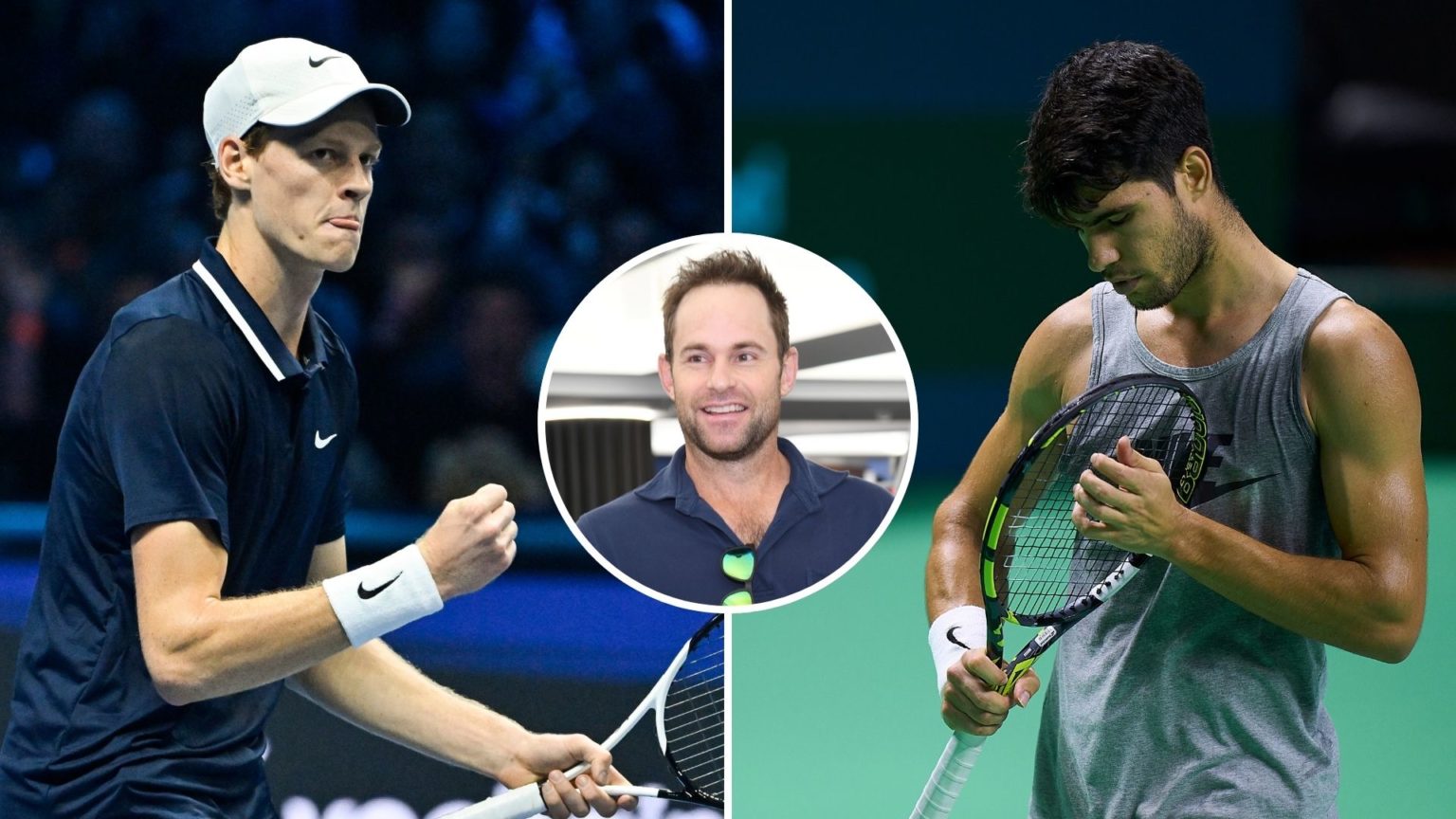
In the sun-drenched courts of Monte Carlo, Carlos Alcaraz has once again proven why he’s a force to be reckoned with on clay, capturing his eighth career clay court title with a commanding 3-6, 6-1, 6-0 victory over Lorenzo Musetti. This triumph at the Monte Carlo Masters, where the 21-year-old Spaniard overcame a one-set deficit, has sparked fervent analysis from tennis luminaries, including former world No. 1 Andy Roddick. On his Served podcast, Roddick dissected the key reason behind Alcaraz’s clay court dominance, highlighting a stark contrast with his rival, world No. 1 Jannik Sinner, and offering insights into why Alcaraz thrives on the red dirt in ways Sinner does not.
Alcaraz’s game on clay is a spectacle of explosive movement and creative shot-making. Roddick pinpointed Alcaraz’s ability to exploit opponents’ movement as his defining strength, particularly on surfaces like clay where footing is less certain. “Carlos is so good once he gets you pulled, he can pull that drop shot out and you are playing against your movement and trying to get forward,” Roddick explained. This tactical brilliance allows Alcaraz to manipulate rallies, forcing opponents to scramble and cover vast swathes of the court. His elite drop shot, especially off the forehand, is a weapon that disrupts rhythm, particularly on clay where sliding and recovery are more challenging. Roddick emphasized that Alcaraz’s “fluency of movement and his creativity can expose your movement and make you have to move against the grain constantly,” a quality that sets him apart on this surface.
In contrast, Sinner, who has been sidelined since defending his Australian Open title in January 2025 due to a doping-related suspension, excels on hard courts with a more consistent, machine-like approach. Roddick noted that while Sinner is “the best player in the world when there is not something slippery under his feet,” his game lacks the same adaptability on clay and grass. Sinner’s calmer on-court persona and high level of consistency contrast with Alcaraz’s fiery intensity and fluctuating playstyle, which thrives in the chaotic, sliding dynamics of clay. “Clay is obviously very different, grass is very different. Carlos Alcaraz has risen on those things,” Roddick observed, underscoring Alcaraz’s dominance on surfaces that demand versatility.
Alcaraz’s Monte Carlo run was a testament to this prowess. Despite a shaky start, dropping the first set in three matches, he showcased his adaptability, overpowering opponents like Francisco Cerundolo and Daniel Altmaier with heavy forehands and relentless pressure. Roddick, speaking on the Tennis Channel Live Podcast, marveled at Alcaraz’s performance against Altmaier: “He had the forehand going both ways. Altmaier was having to play so many good shots and cover so much ground and take so much risk, not to get behind and keep drifting back, because of the weight of shot from Carlos Alcaraz.” This ability to dictate play and exploit clay’s slower pace makes Alcaraz a nightmare for opponents, as he combines raw power with deceptive finesse.
The Spaniard’s clay court pedigree is undeniable. Eight of his 18 ATP titles, including last year’s French Open, have come on clay, and his sixth Masters 1000 title in Monte Carlo solidified his status as a clay court maestro. His movement, described by Roddick as explosive and anticipatory, allows him to slide effortlessly and transition from defense to offense. Unlike Sinner, whose hard-court dominance relies on precision and baseline consistency, Alcaraz’s game is tailor-made for clay’s grind. “What he does phenomenally well and it works better when people don’t have sure footing, so outside of hard courts,” Roddick said, highlighting how Alcaraz’s ability to “play against people’s movement” thrives on the red dirt.
Alcaraz’s rivalry with Sinner, who holds a 4-6 head-to-head deficit but won all three of their 2024 encounters, adds another layer of intrigue. Roddick believes Alcaraz’s game “bothers Sinner more than anyone else on planet earth in this current moment,” particularly on clay and grass, where Alcaraz’s creativity shines. While Sinner’s 16 hard-court titles dwarf his single clay and grass victories, Alcaraz’s versatility across surfaces—evidenced by his 2024 French Open and Wimbledon triumphs—gives him an edge in their burgeoning rivalry. “It’s become pretty clear cut, the battle lines, where Sinner is on hard, and anything that is not hard is kind of Alcaraz territory right now,” Roddick noted.
As Alcaraz prepares for upcoming clay events in Madrid, Rome, and the French Open, his Monte Carlo success signals a return to form after a mixed start to 2025, including losses to Novak Djokovic at the Australian Open and Jack Draper at Indian Wells. His ability to reset expectations, as Roddick urged fans to do, underscores his resilience. “Carlos Alcaraz already has more majors than Andy Murray, he’s halfway towards icons like Connors, Agassi,” Roddick said, defending Alcaraz against critics calling for a coaching change. With his clay court mastery, fueled by movement, creativity, and an unyielding spirit, Alcaraz is not just chasing titles—he’s carving out a legacy that could rival the sport’s greatest.
Leave a Reply